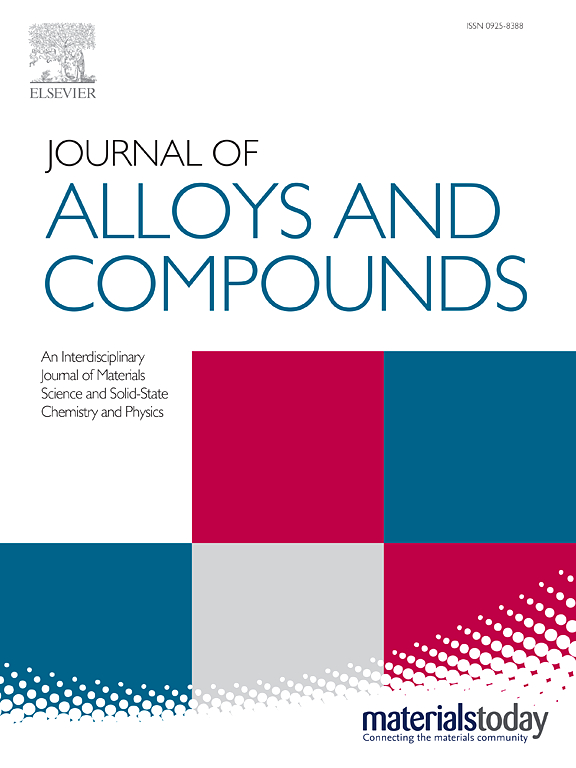A novel high-entropy perovskite electrolyte of BaSn0.15Ce0.45Zr0.15Y0.1Yb0.1Gd 0.05O3-δ with enhanced proton conduction performance
IF 5.8
2区 材料科学
Q2 CHEMISTRY, PHYSICAL
引用次数: 0
Abstract
High-entropy materials are increasingly becoming the focus of research due to their unique high-entropy effect and the unprecedented potential for applications in numerous fields. In contrast to the conventional design concepts for high-entropy materials, this study employed the non-isomolar ratio component strategy to design and successfully synthesise two single-phase high-entropy perovskite-type proton conductor materials, namely BaSn0.15Ce0.35Zr0.25Y0.1In0.1Ti0.05O3-δ (BSCZYIT) and BaSn0.15Ce0.35Zr0.25Y0.1Yb0.1Gd0.05O3-δ (BSCZYYbG). The electrical properties of BSCZYIT and BSCZYYbG materials were systematically studied based on the combined use of electrochemical impedance spectroscopy (EIS) and distribution of relaxation times (DRT). Moreover, the intrinsic factors contributing to the observed differences in the electrical properties of the BSCZYIT and BSCZYYbG materials were investigated through the construction of a defect equilibrium model. The findings indicate that the BSCZYYbG material displays the highest proton conductivity and proton transport number. The proton transport number of the BSCZYYbG material was 0.90 at 600 °C with pH2O=0.054 atm and pO2=0.20 atm. Furthermore, the proton mobility of the material was 6.71×10-6 cm2/(V⋅s) at 600 °C, with a notable increase observed in proton mobility with rising temperature. This study not only presents a novel strategy for developing proton conduction electrolyte materials but also paves the way for the advancement of SOFCs through the introduction of high-entropy materials.求助全文
约1分钟内获得全文
求助全文
来源期刊

Journal of Alloys and Compounds
工程技术-材料科学:综合
CiteScore
11.10
自引率
14.50%
发文量
5146
审稿时长
67 days
期刊介绍:
The Journal of Alloys and Compounds is intended to serve as an international medium for the publication of work on solid materials comprising compounds as well as alloys. Its great strength lies in the diversity of discipline which it encompasses, drawing together results from materials science, solid-state chemistry and physics.
 求助内容:
求助内容: 应助结果提醒方式:
应助结果提醒方式:


